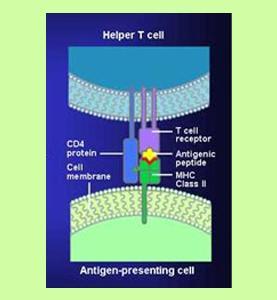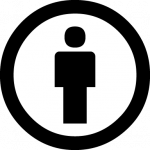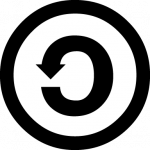
Image adapted from the National Cancer Institute. This image is in the Public Domain.
This sequence explores the elements of innate and acquired immune defense mecahnisms, the cells involved, their development and maturation, and biomolecular cellular communication mechanisms required to successfully fight off infection.
Sequence Director:
Wesley Dunnick, Ph.D.
dScribes:
Reda Jaber
Wassim Chehouri
Matthew Wixson
Syllabus
Grading
This sequence will be graded as pass/fail. Students will receive a single cumulative grade for the sequence, based a quiz and final exam. Each quiz and examination question is worth one point. In order to pass the sequence a student must achieve a cumulative score of at least 75%.
Total Questions (approximate)
Quiz (2/23) - Week 1
Lectures - 28
Small Group - 2
Laboratories - 8
Complement, Transplantation Allergy/Asthma Self Studies - 2
Final (3/2) - Week 1
Lectures - 28
Small Group - 2
Laboratories - 4
Complement, Transplantation Allergy/Asthma Self Studies - 2
Final (3/2) - Week 2
Lectures - 30
Small Group - 2
Laboratories - 20-24
Complement, Transplantation Allergy/Asthma Self Studies - 6
Small Groups
The Immunology Sequence includes three one-hour small groups which are run differently than small groups in other sequences. Your attendance at small groups is not required. The material to be presented is important, particularly to place the details you learn about immune responses in lecture into the context of a larger picture and into the context of a real clinical situation. There will be two exam or quiz questions asked for each small group session. Each small group has a unique leader, and hence each small group experience is unique. The small group leaders are aware of the quiz/exam questions to be posed, and will be sure to cover that specific material (which is very likely to arise naturally during the discussion questions).
Beyond that part of the material, the discussion in each small group will depend on both the leader and the student’s questions about the material. Hence, it would be impossible to condense all of the small group experiences into a common document. Therefore, there will be no materials (other than the Multiple Myeloma Powerpoint) posted online for these small groups. Your only way to obtain the experience is to attend.
Required Textbook
- Robbins Pathologic Basis of Disease. Cotran, Kumar, and Robbins (Saunders)
Recommended Textbook
- The Immune System. - P. Parham (second edition, Garland Science.) 2005. ISBN: 0-8153-4093-1
We strongly recommend that you purchase some basic Immunology text for this course. The Parham text (above) has about the right depth for this class. You might be able to use any other text that is less than four years old. For example, Janeway et al., Abbas et al.
Course Faculty
- Wesley Dunnick, Ph.D. (Course Director) - Department of Microbiology and Immunology
- Cheong-Hee Chang, Ph.D. - Department of Microbiology and Immunology
- Joseph C. Fantone, M.D. - Department of Pathology
- Massimo T. Pietropaolo, M.D. - Internal Medicine and Pediatrics and Communicable Diseases
- Lloyd M. Stoolman, M. D. - Department of Pathology
- Thomas R. Gest, Ph. D. - Medical Education
- J. Matthew Velkey, Ph. D. - Cell and Developmental Biology
Learning Outcomes
- To understand the structural and genetic basis of diversity and specificity of immunoglobulins and T cell receptors.
- To understand the utility of antibodies in many clinical tests for proteins, hormones, etc.
- To understand the events that hallmark the antigen-independent and antigen-dependent phases of B cell differentiation.
- To understand the diversity of MHC molecules, and how that diversity differs from immunoglobulin and T cell receptor diversity.
- To understand how MHC molecules present antigens, and how antigens are processed to before presentation.
- To understand positive and negative T cell selection in the thymus, and how those events influence the final T cell repertoire.
- To understand the requirements for T cell activation by antigen, and how the nature of the antigen presenting cell influences the outcome of antigen recognition.
- To understand that transplantation reactions are mainly the result of cell recognition of allogeneic MHC molecules.
- To understand how the effector functions of antibodies, T cells, macrophages, neutrophils, and NK cells can eliminate pathogens or lead to pathology.
- To understand the function of CD4+ Th1, CD4+ Th2 cells, and CD8+ cytotoxic T cells in the immune response.
- To appreciate the multiple roles of cytokines and chemokines in mediating interactions between leukocytes and other leukocytes and between leukocytes and other types of cells.
- To understand how cells in both innate and acquired immunity can encounter a pathogen first at one site, and then fight an infection at some distal site.
Reading List
Required Textbook
- Robbins Pathologic Basis of Disease. Cotran, Kumar, and Robbins (Saunders)
Recommended Textbook
- The Immune System. - P. Parham (second edition, Garland Science.) 2005. ISBN: 0-8153-4093-1
We strongly recommend that you purchase some basic Immunology text for this course. The Parham text (above) has about the right depth for this class. You might be able to use any other text that is less than four years old. For example, Janeway et al., Abbas et al.

Image adapted from the National Cancer Institute. This image is in the Public Domain.
Jump to:
| Document Title | Creator | Downloads | License |
|---|---|---|---|
|
Syllabus |
Wesley Dunnick
|
| Document Title | Creator | Downloads | License |
|---|---|---|---|
|
02.09.09(a): Case Study: Type I Diabetes Overview of Immune Response |
Dept. Staff
|
||
|
02.09.09(b): Antibodies |
Dept. Staff
|
||
|
02.09.09(c): Antibody-Based Clinical Tests |
Dept. Staff
|
||
|
02.10.09(a): Self-Study: The Complement System in Human Disease |
Joe Fantone
|
||
|
02.10.09(b): Phagocytic Cells: Mechanisms of Bacterial Injury and Tissue Injury |
Joe Fantone
|
||
|
02.10.09(c): Arachadonic Acid Metabolism |
Joe Fantone
|
||
|
02.10.09(d): B-Cell Development |
Dept. Staff
|
||
|
02.11.09(a): Joining Variable & Constant Region Genes |
Dept. Staff
|
||
|
02.11.09(b): B-Cell Differentiation |
Dept. Staff
|
||
|
02.12.09: Multiple Myeloma |
Dept. Staff
|
||
|
02.13.09(a) Cytokines |
Dept. Staff
|
||
|
02.13.09(b): T-Cell Development |
Dept. Staff
|
||
|
02.16.09: Lymphatic Histology |
Matthew Velkey
|
||
|
02.17.09(a): Types I - IV Immunopathology |
Joe Fantone
|
||
|
02.17.09(b): Self Study: Allergy & Asthma |
Dept. Staff
|
||
|
02.17.09(c): Self Study: Transplantation |
Dept. Staff
|
||
|
02.18.09: Review: Type 1 Diabetes and Overview of Immune Response |
Dept. Staff
|
| Document Title | Creator | Downloads | License |
|---|---|---|---|
|
2007 Daily Schedule: M1 Immunology |
Dept. Staff
|
||
|
2008 Daily Schedule: M1 Immunology |
Dept. Staff
|
||
|
2009 Daily Schedule: M1 Immunology |
Dept. Staff
|
||
|
2010 Daily Schedule: M1 Immunology |
Dept. Staff
|
| Document Title | Creator | Downloads | License |
|---|---|---|---|
|
02.11.08(a): Sequence Intro Immunology |
Aken Desai
Michael Mathis
|
||
|
02.11.08(b): Antibody Structure and Function |
Aken Desai
Michael Mathis
|
||
|
02.11.08(c): Antibody-Based Clinical Tests |
Aken Desai
Michael Mathis
|
||
|
02.12.08(a): Complement Self-Study Module |
Aken Desai
Michael Mathis
|
||
|
02.12.08(b): Phagocytic Cells: Mechanisms of Bacterial Killing and Tissue Injury |
Aken Desai
Michael Mathis
|
||
|
02.12.08(c): Arachidonic Acid Metabolites and Inflammation |
Aken Desai
Michael Mathis
|
||
|
02.12.08(d): B Cell Development and Activation |
Aken Desai
Michael Mathis
|
||
|
02.12.08: Anterior Triangle of the Neck |
Aken Desai
Michael Mathis
|
||
|
02.13.08(a): Joining Variable and Constant Regions |
Aken Desai
Michael Mathis
|
||
|
02.13.08(b): Eventsin Antigen Driven B Cell Differentiation |
Aken Desai
Michael Mathis
|
||
|
02.13.08(c): T Cell Antigen Receptor |
Aken Desai
Michael Mathis
|
||
|
02.13.08: Posterior Triangle of the Neck |
Aken Desai
Michael Mathis
|
||
|
02.14.08: Small Group: Processing and Presentation of Antigens for TCR Recognition and Myeloma |
Aken Desai
Michael Mathis
|
||
|
02.15.08(a): Cytokines and Chemokines |
Aken Desai
Michael Mathis
|
||
|
02.15.08(b): The MHC Complex |
Aken Desai
Michael Mathis
|
||
|
02.15.08(c): T Cell Development |
Aken Desai
Michael Mathis
|
||
|
02.18.08(a): T Cell Activation |
Aken Desai
Michael Mathis
|
||
|
02.18.08(b): T Cell Effector Function |
Aken Desai
Michael Mathis
|
||
|
02.18.08: Histology - Lymphatic System |
Aken Desai
Michael Mathis
|
||
|
02.19.08(a): Type I Diabetes |
Aken Desai
Michael Mathis
|
||
|
02.19.08(b): Classification of Immune Mediated Tissue Injury |
Aken Desai
Michael Mathis
|
||
|
02.19.08(c): Small Group: Hyper-IgM Agammaglobulinemia |
Aken Desai
Michael Mathis
|
||
|
02.19.08(d): Allergy and Asthma Self-Study Module |
Aken Desai
Michael Mathis
|
||
|
02.19.08(e): Transplantation Self Study |
Aken Desai
Michael Mathis
|
||
|
02.20.08: Small Group: Leukocyte Development and Trafficking During Inflammation and Immunity + Myasthenia Gravis |
Aken Desai
Michael Mathis
|



